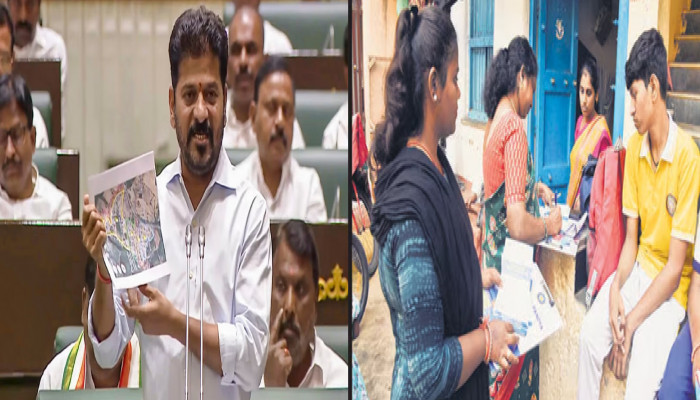‘Flawed Backward Classes count’: Telangana's caste survey faces backlash from opposition
- In Reports
- 05:37 PM, Feb 06, 2025
- Myind Staff
The Telangana government's recent caste survey has sparked a political controversy even before its official release, as opposition parties raise concerns about inconsistencies in the count of Backward Classes.
The state has carried out two significant caste surveys: one in 2014, when K Chandrasekhar Rao (KCR) was the chief minister at the time, and another in 2024, when Chief Minister Revanth Reddy led the Congress-led administration. The substantial differences in population estimates between the two surveys, however, have sparked discussions over their methodology and accuracy. Both the 2024 Socio, Economic, Educational, Employment, Political, and Caste Survey (SEEEPC) and the 2014 Samagra Kutumba Survey (SKS) were commissioned to evaluate the socioeconomic makeup of the state. Congress leader Rahul Gandhi's national campaign for caste-based representation, known as "Jitni Abadi Utna Hissedari," was in line with the 2024 survey, according to The Print.
Despite the significance of these surveys, the complete reports have not been made public by the present Congress administration or the KCR government. But important conclusions from both show glaring differences for instance – the 2014 survey estimated the Backward Classes at 51 percent of the population, while the 2024 survey recorded them at 46 percent. However, when Muslim BCs were included, the number rose to 56 percent. On the other hand, the Forward Castes (OCs) were pegged at 21 percent in the 2014 report, but the 2024 report showed a significant decline, bringing their number down to 13.3 percent. Even after including forward caste Muslims, the percentage of the OC (Other Castes) in 2024 is still 15.79%.
On Tuesday, Chief Minister Revanth Reddy shared the latest survey results in the Telangana Assembly. However, opposition parties quickly pointed out inconsistencies. The government document, which included 2014 data, was referenced during the session. This document was available on the Marri Channa Reddy HRD Institute (MCRHRDI) website but was reportedly removed after the controversy stirred up. BJP MLA Payal Shankar raised questions on the sharp decrease in the Backward Class population, stating that such a large drop seemed unrealistic. “Do you mean to say we shunned the institution of marriage and stopped producing offspring?” he asked in the Assembly.
Bharat Rashtra Samithi (BRS) working president KT Rama Rao (KTR) highlighted some inconsistencies, mentioning that the 2014 survey was thorough, with 36.8 million people taking part. He referred to figures from the SKS document, noting that in 2014, there were 18.5 million BCs (51 percent). When adding 10 percent Muslim BCs, the total BC population increased to 61 percent. “Look at the drastic variance compared with the present survey. Even BC community leaders are questioning how their population dropped from 18.5 million to 16.4 million now, and how their proportion fell to 46 per cent,” said KT Rama Rao (KTR). “The Congress government cut down the BC ratio by 5 per cent and thereby is cutting their throats,” he added.
On Tuesday, several leaders from the Backward Class held a roundtable conference to discuss the survey results. The meeting, which included former BRS minister Srinivas Goud, saw everyone unanimously rejecting the 2024 findings and tearing copies of the report as a form of protest. T Chiranjeevulu, a former IAS official and convener of the Backward Class Intellectuals Forum, pointed out significant disparities. “How can the state’s population expand by only 200,000 people over a decade? The 2014 survey included all Muslims in the OC category, whereas in 2024, 12.56 per cent of Muslims were divided among BCs and OCs,” he said. “The Revanth government should rectify these gaps and release the full report,” he added. However, Revanth Reddy, the chief minister, and his deputy, Bhatti Vikramarka, denied any disparities despite growing criticism. According to them, the survey was accurate, flawless, and scientific.







Comments